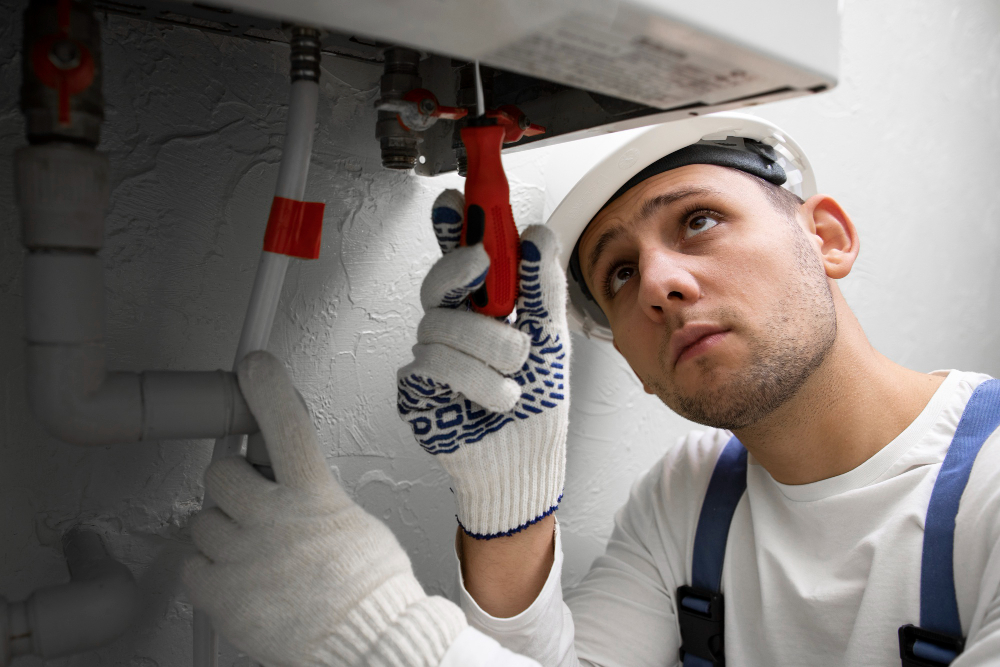Every homeowner eventually faces the moment when their water heater no longer performs as it should. Maybe your morning showers turn lukewarm halfway through, or perhaps you’ve spotted a puddle near the tank that wasn’t there before. Whatever the case, it’s time to think about a water heater replacement near me. Replacing your water heater isn’t just about restoring comfort—it’s about improving energy efficiency, reducing long-term costs, and ensuring your home stays safe and functional.
In this complete step-by-step guide, we’ll explore how to recognize the signs of failure, understand the different types of systems available, calculate the right size for your household, and prepare for a smooth installation. Whether you live in Sacramento or the Bay Area, these practical insights will help you make an informed, confident decision when it’s time for an upgrade.
Step 1: Recognize the Warning Signs
One of the most common questions homeowners ask is, “How do I know when it’s time to replace my water heater?” While age is a major factor, there are other warning signs that point toward an impending breakdown:
- Fluctuating or inconsistent water temperature
- Hot water running out faster than usual
- Rumbling, popping, or hissing noises from the tank
- Rust-colored water or a metallic taste
- Water leaking or pooling at the base of the unit
- A sharp increase in utility bills despite normal usage
If your system shows more than one of these symptoms, it’s probably near the end of its life span. Instead of paying for frequent repairs, investing in a replacement is usually the smarter move. A qualified professional can inspect your current setup, confirm the diagnosis, and recommend an efficient upgrade for your needs.art planning rather than over-design, homeowners achieve both beauty and practicality.

Step 2: Understand the Main Types of Water Heaters
When you start searching for a water heater replacement near me, you’ll see that there’s no one-size-fits-all solution. Modern systems are built for different fuel types, budgets, and efficiency goals. The main types include:
Conventional Storage Water Heaters
These models store hot water in an insulated tank until it’s needed. They’re affordable and familiar, but they waste energy keeping the water hot constantly. The average lifespan is 8–12 years.
Tankless (On-Demand) Water Heaters
These units heat water instantly as it passes through the system, giving you a continuous supply without storage. They cost more upfront but save energy and can last over 20 years.
Heat Pump (Hybrid) Water Heaters
Hybrid models pull warmth from the air and transfer it to the water. They use up to 60% less electricity than standard electric heaters and are ideal for mild climates like Northern California.
Solar Water Heaters
Solar systems rely on rooftop panels to capture renewable energy. Though installation costs more, they can greatly reduce your bills and carbon footprint. Many homeowners pair them with backup systems.
Step 3: Select the Correct Size
Sizing your water heater correctly is crucial. An undersized unit runs out of hot water quickly, while an oversized one wastes energy. Consider your household’s peak-hour demand. A family of four generally needs a 50-gallon tank or a tankless model with a flow rate of 7–9 gallons per minute.
Professional installers calculate your exact needs based on the number of bathrooms, water usage habits, and fixture efficiency. Getting the size right ensures both comfort and energy savings.
Step 4: Evaluate Energy Efficiency
When researching a water heater replacement near me, energy efficiency should be a top priority. Every model has an Energy Factor (EF) or Uniform Energy Factor (UEF) that measures how effectively it converts energy into heat. Higher ratings mean lower costs. Look for ENERGY STAR® certification for the best results.
Upgrading from an old, inefficient model can reduce water heating bills by up to 30%. Hybrid and tankless systems often pay for themselves within a few years through energy savings. than decorative extras.

Step 5: Understand Your Fuel Options
Most homes use natural gas, propane, or electricity for water heating. Staying with your current fuel type simplifies installation, but switching can improve efficiency. For example, replacing a gas heater with an electric heat pump model can lower emissions and may qualify you for rebates.
Always check your local utility rates and available incentives before deciding. A licensed installer can help determine the most cost-effective and efficient option for your home.
Step 6: Budget for the Project
Cost is a key factor in any home improvement project. A standard water heater replacement near me typically costs between $1,200 and $3,500, depending on the type, size, and installation complexity. Tankless and hybrid systems are more expensive initially but offer long-term savings.
Ask your contractor about available rebates and tax credits. Many California energy providers offer incentives for eco-friendly models, and experienced installers can help with the paperwork.
Step 7: Plan for a Smooth Installation
Once you’ve chosen your system, it’s time to prepare for installation. Clear the area around the old unit, ensure access to shut-off valves, and check for proper ventilation if using a gas model. Professional plumbers handle everything—from draining the old tank to testing the new setup.
Installation usually takes a few hours, but switching from a tank to a tankless system may require adjustments to plumbing or electrical work. Always hire a licensed, insured contractor who follows local codes and manufacturer guidelines.
Step 8: Schedule Ongoing Maintenance
Even the best water heater needs regular maintenance. Annual care can extend its life by several years. Important tasks include flushing sediment from the tank, checking pressure valves, and inspecting the anode rod. Tankless systems should be descaled regularly to prevent buildup.
Routine service reduces breakdowns and keeps your warranty valid. A reliable service provider can add you to a maintenance plan to keep your system running efficiently year-round.
Step 9: Work With a Trusted Local Expert
Choosing the right installer is just as important as choosing the right unit. Always verify that your contractor is licensed, insured, and has good reviews. Look for professionals who offer clear pricing, strong warranties, and honest communication. A reputable local plumbing and HVAC company can manage everything from selection to maintenance.
Local expertise also matters because water quality, codes, and rebates vary by region. Professionals familiar with Sacramento and Bay Area homes will ensure your new system performs optimally.
Step 10: Enjoy Comfort, Efficiency, and Long-Term Value
After installation, you’ll immediately notice the benefits—steady hot water, lower bills, quieter operation, and greater safety. A modern water heater doesn’t just restore comfort—it enhances your home’s efficiency and reliability for years.
When planning your own water heater replacement near me, take time to research, budget, and partner with a trusted professional. The right system will provide lasting comfort and savings.
Final Thoughts
Replacing your water heater is a big project, but it doesn’t have to be stressful. By following these steps and working with experienced technicians, you can ensure a smooth, efficient upgrade. Investing in a professional water heater replacement near me today means dependable, energy-efficient hot water for many years to come.





